The United States Armed Forces are the military forces of the United States. The armed forces consist of six service branches: the Army, Marine Corps, Navy, Air Force, Space Force, and Coast Guard. All six armed services are among the eight uniformed services of the United States.

Anti-aircraft warfare, counter-air, anti-air, AA, flak, layered air defence or air defence forces is the counter to aerial warfare. It is defined by NATO as "all measures designed to nullify or reduce the effectiveness of hostile air action". It includes surface based, subsurface, and air-based weapon systems, associated sensor systems, command and control arrangements, and passive measures. It may be used to protect naval, ground, and air forces in any location. However, for most countries, the main effort has tended to be homeland defence. NATO refers to airborne air defence as counter-air and naval air defence as anti-aircraft warfare. Missile defence is an extension of air defence, as are initiatives to adapt air defence to the task of intercepting any projectile in flight.

The Indian Army is the land-based branch and largest component of the Indian Armed Forces. The President of India is the Supreme Commander of the Indian Army, and its professional head is the Chief of Army Staff (COAS). The Indian Army was established on 1 April 1895 alongside the long established presidency armies of the East India Company, which too were absorbed into it in 1903. Some princely states maintained their own armies which formed the Imperial Service Troops which, along with the Indian Army formed the land component of the Armed Forces of the Crown of India, responsible for the defence of the Indian Empire. The Imperial Service Troops were merged into the Indian Army after independence. The units and regiments of the Indian Army have diverse histories and have participated in several battles and campaigns around the world, earning many battle and theatre honours before and after Independence.
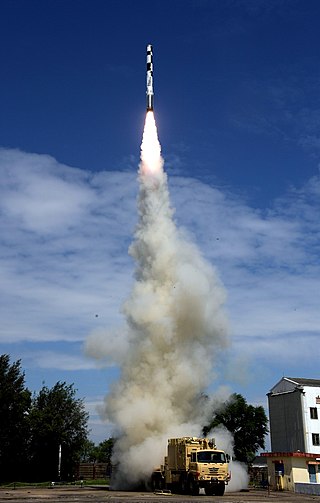
The BrahMos is a medium-range ramjet supersonic cruise missile that can be Launched from Submarines, Ships, Fighter Aircraft or TEL. It is a joint-venture between the Indian Defence Research and Development Organisation (DRDO) and the Russian Federation's NPO Mashinostroyeniya, who together have formed BrahMos Aerospace. The missile is based on P-800 Oniks. The name BrahMos is a portmanteau formed from the names of two rivers, the Brahmaputra of India and the Moskva of Russia.

The Bangladesh Army is the land warfare branch and the largest component of the Bangladesh Armed Forces. The primary mission of the Army is to provide necessary forces and capabilities to deliver the Bangladeshi government's security and defence strategies and defending the nation's territorial integrity against external attack. Control of personnel and operations is administered by the Army Headquarters, Dhaka. The Bangladesh Army is also constitutionally obligated to assist the government and its civilian agencies during times of domestic national emergency. This additional role is commonly referred to as "aid to civil administration".
The Indian Defence services have established numerous academies and staff colleges across India for the purpose of training professional soldiers in military sciences, warfare command and strategy, and associated technologies.
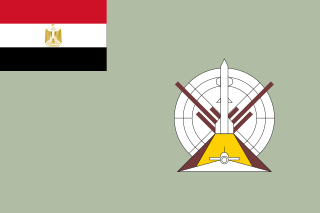
The Egyptian Air Defence Forces or EADF, is the Anti-aircraft warfare branch of the Egyptian Armed Forces. It is responsible for protecting the Egyptian airspace against any hostile air attacks. The EADF was established in accordance with the presidential decree issued on 1 February 1968, which established the Air Defence Forces as the fourth branch, next to the Navy, Egyptian Ground Forces, and Egyptian Air Force. From 1938 onwards air defence forces had been part of the artillery and under the operation command of the Air Force. Egypt has a modern system of air defence armament, which is divided between anti-aircraft missiles long, medium and short-range anti-aircraft artillery systems and early warning radars. Both Western and Soviet bloc countries have supplied equipment.

The Rejimen Artileri DiRaja is the artillery corps of the Malaysian Army. Rejimen Artileri DiRaja was formed in Kajang on 15 August 1957 when a single battery was formed, drawn from Malay personnel formerly serving with the British Army's Royal Regiment of Artillery. Today Rejimen Artileri DiRaja is a modern fighting arm providing direct fire support to Malaysian Army units using field artillery pieces and MLRS.
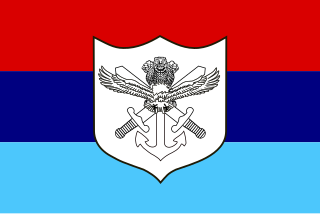
The Indian Armed Forces are the military forces of the Republic of India. It consists of three professional uniformed services: the Indian Army, Indian Navy, and Indian Air Force. Additionally, the Indian Armed Forces are supported by the Central Armed Police Forces, Indian Coast Guard and Special Frontier Force and various inter-service commands and institutions such as the Strategic Forces Command, the Andaman and Nicobar Command and the Integrated Defence Staff. The President of India is the Supreme Commander of the Indian Armed Forces but the executive authority and responsibility for national security is vested in the Prime Minister of India and their chosen Cabinet Ministers. The Indian Armed Forces are under the management of the Ministry of Defence of the Government of India. With strength of over 1.4 million active personnel, it is the world's second-largest military force and has the world's largest volunteer army. It also has the third-largest defence budget in the world. The Global Firepower Index report lists it as the fourth most-powerful military.

The Ukrainian Ground Forces, also referred to as the Ukrainian army, are the land forces of Ukraine and one of the eight branches of the Armed Forces of Ukraine. They were formed from Ukrainian units of the Soviet Army after Ukrainian independence, and trace their ancestry to the 1917–22 army of the Ukrainian People's Republic.

Short range air defense (SHORAD) is a group of anti-aircraft weapons and tactics that have to do with defense against low-altitude air threats, primarily helicopters and low-flying aircraft such as the A-10 or Sukhoi Su-25. SHORAD and its complements, HIMAD and THAAD divide air defense of the battlespace into domes of responsibility based on altitude and defensive weapon ranges.
List of abbreviations, acronyms and initials related to military subjects such as modern armour, artillery, infantry, and weapons, along with their definitions.
The Indian Ballistic Missile Defence Program is an initiative to develop and deploy a multi-layered ballistic missile defence system to protect India from ballistic missile attacks. It was launched in 2000 after Kargil War by the Atal Bihari Vajpayee government. Testing was carried out and continuing as of 2006, and the system was expected to be operational four years from then according to the head of the country's missiles development programme, Vijay Kumar Saraswat.

The Regiment of Artillery is a combat/fighting arm of the Indian Army, which provides massive firepower during all ground operations of the Indian Army. It is a successor to the Royal Indian Artillery (RIA) of British Indian Army, which itself traces its origins to the formation of Bombay Artillery in 1827.

The South African Army Air Defence Artillery Formation is the controlling entity of all South African Army Air Defence Artillery units. This Formation consists of both regular and reserve units.
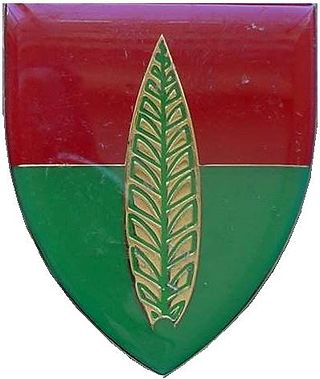
10 Anti-Aircraft Regiment is an anti-aircraft artillery regiment of the South African Army.
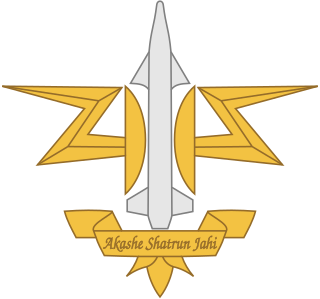
The Corps of Army Air Defence, is an active corps of the Indian Army and a major combat support arm tasked with air defence of the country from foreign threats. The AAD is responsible for the protection of Indian air space from enemy aircraft and missiles, especially below 5,000 feet.
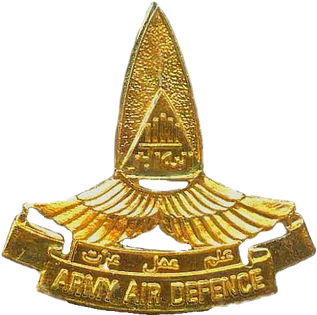
The Pakistan Army Air Defense Command is a military formation of Pakistan Army formed in 1999 with a mission of providing the country with air and missile defense.

The Vertical Launch – Short Range Surface to Air Missile, or VL-SRSAM is a quick reaction surface-to-air missile developed by the Indian Defence Research and Development Organisation (DRDO). During mid-course flight, the missile uses fibre-optic gyroscope based inertial guidance mechanism while in terminal phase uses active radar homing. With lock on before launch (LOBL) and lock on after launch (LOAL) capability, the missile receives mid-course update via datalink. VL-SRSAM intended to replace older Barak 1 surface to air missile system onboard Indian Navy warships. It will also be used as short range air defence system for Indian Air Force.
This article consists of projects of the Defence Research and Development Organisation.















